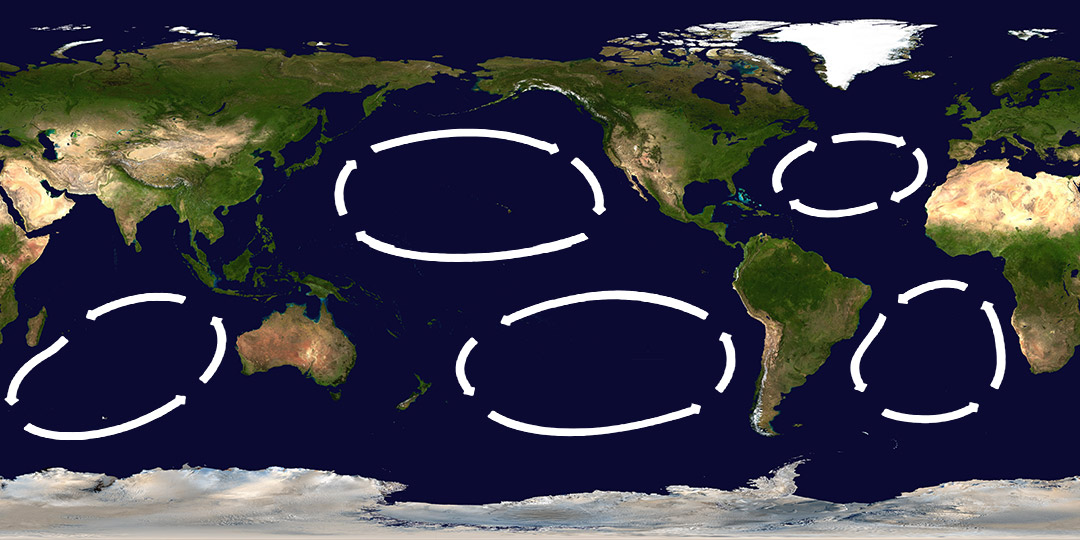Gyres
There are 5 major gyres across the globe. Click on each gyre to learn more about the currents that move water in that part of the world.

Source: WeatherSTEM
There are 5 major gyres across the globe. Click on each gyre to learn more about the currents that move water in that part of the world.

Source: WeatherSTEM
The northward flowing Gulf Stream off the coast of North America carries warm tropical water up into higher latitudes. Here, it meets up with the the southward flowing Labrador Current which brings cold water south from the Arctic. Where this cool water encounters the northern branch of the Gulf stream, sometimes dense fog can be seen. Water moves eastward from here and the current slows and becomes the North Atlantic Drift. When it approaches Europe, it divides into two separate currents. One carries warm waters north, off the coast of Great Britain and Norway, and the other becomes the Canary Current which flows southward and transports cool water toward the equator. Eventually, the Canary Current merges with the westward moving Equatorial Current and then back into the Gulf Stream.
The Southern current of this gyre borders the Antarctic Circumpolar Current. This current keeps Antarctica cold by preventing warm ocean waters from melting the ice sheet. The Brazil Current, on the western edge of the gyre resembles the Gulf Stream, but is much less strong.
The North Pacific Gyre is the largest ecosystem on Earth and also contains the largest garbage patch.
The center of the South Pacific gyre is the farthest point on Earth from any continents. This gyre is largely void of living organisms and has been called and oceanic desert. Sea water in the South Pacific Gyre is the clearest in the world.
This unique gyre changes direction from counter-clockwise in the summer to clock-wise in the winter due to seasonal prevailing winds.
Copyright © . WeatherSTEM. All Rights Reserved.